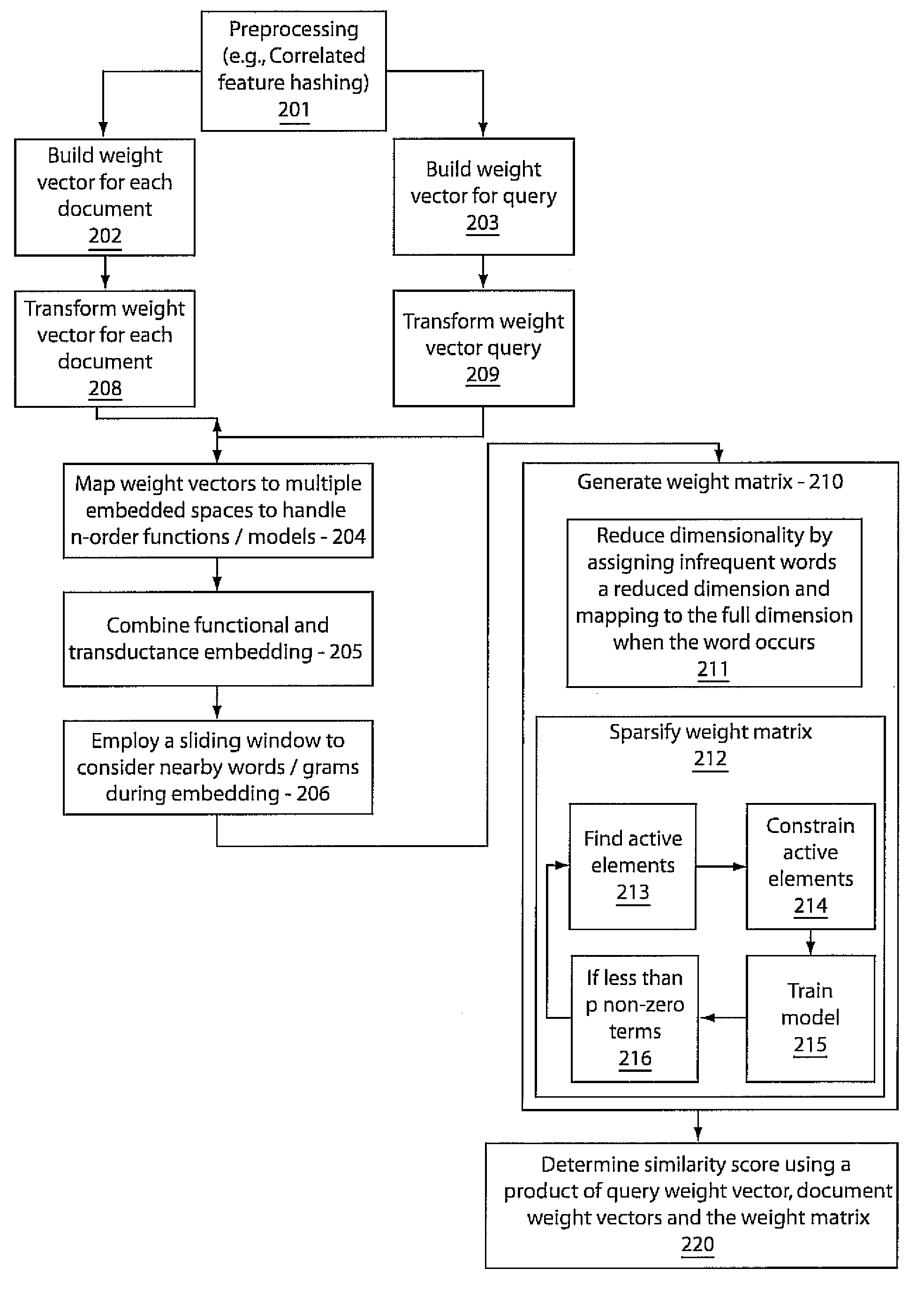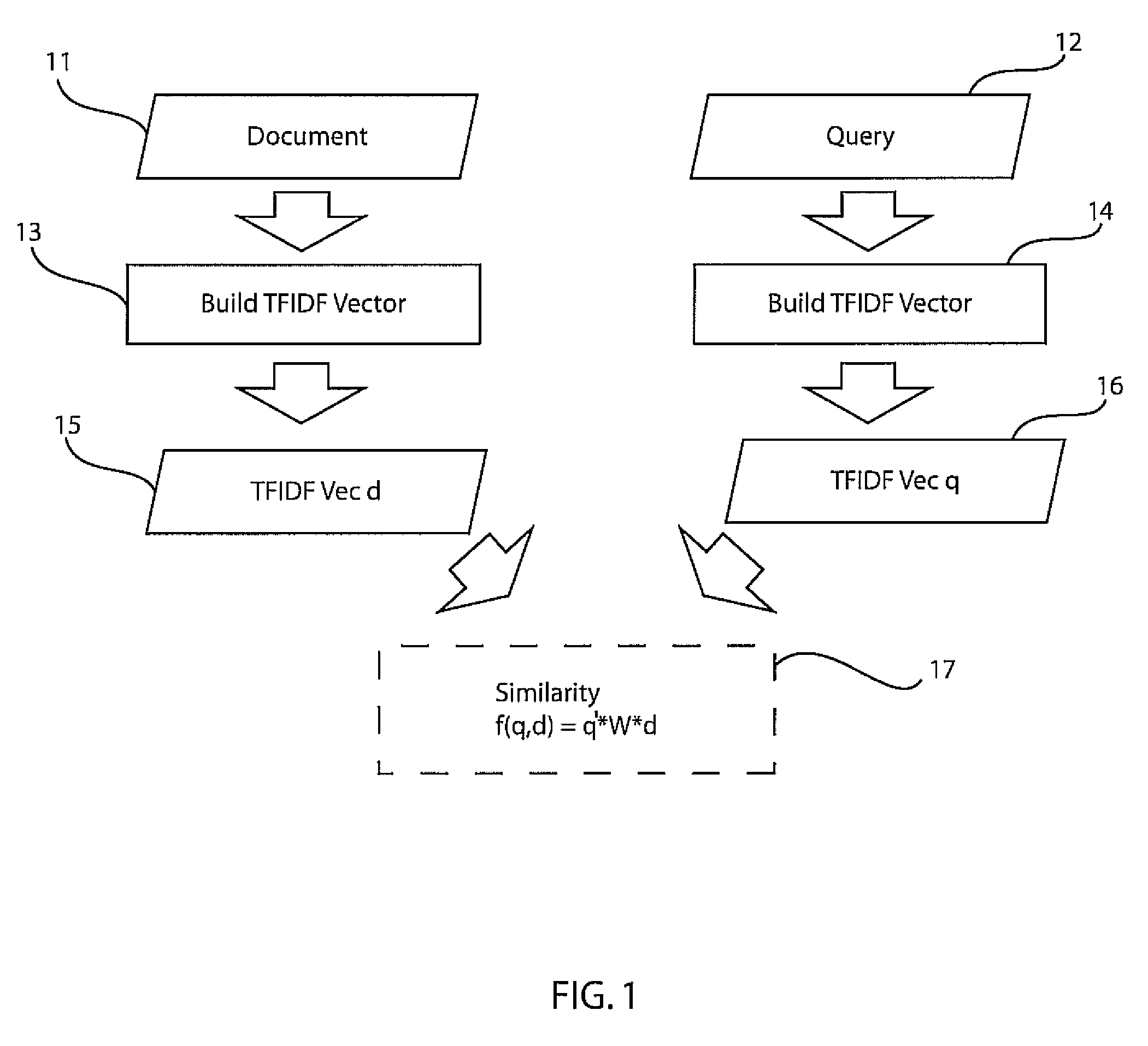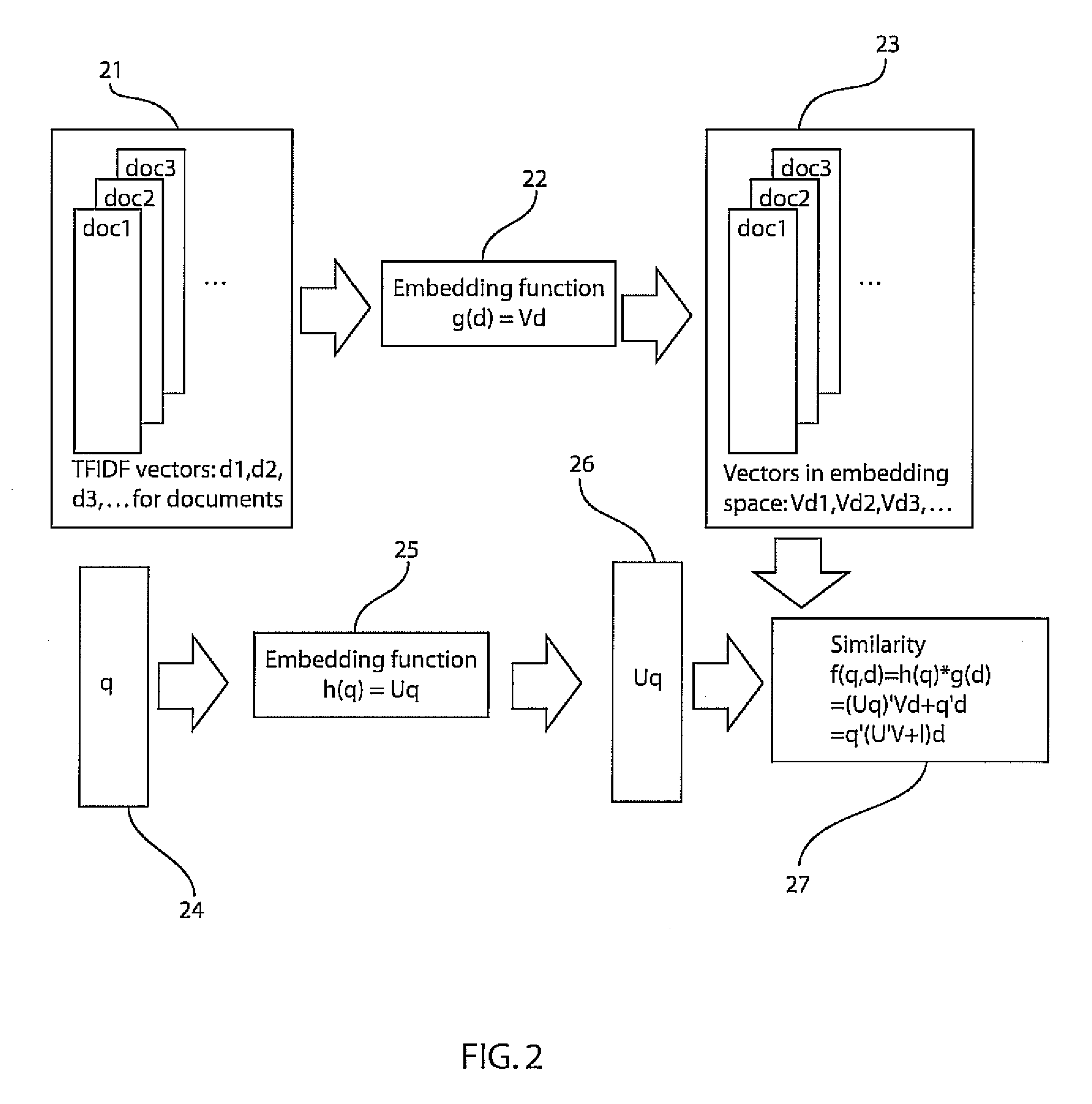Supervised semantic indexing and its extensions
- Summary
- Abstract
- Description
- Claims
- Application Information
AI Technical Summary
Benefits of technology
Problems solved by technology
Method used
Image
Examples
Embodiment Construction
[0019]In accordance with the present principles, a class of models is provided that are discriminatively trained to directly map from word content in a query-document or document-document pair to a ranking score. Like Latent Semantic Indexing (LSI), the present models account for correlations between words (e.g., synonymy, polysemy). However, unlike LSI, the present models are trained with a supervised signal (for example, an expert's judgment on whether a document is relevant to a query, or links among documents) directly on the task of interest, which is one reason for superior results. As the query and target texts are modeled separately, the present approach can easily be generalized to other retrieval tasks as well, such as cross-language retrieval. An empirical study is provided on a retrieval task based on Wikipedia documents, where we obtain state-of-the-art performance using the present method.
[0020]Embodiments described herein may be entirely hardware, entirely software or...
PUM
 Login to View More
Login to View More Abstract
Description
Claims
Application Information
 Login to View More
Login to View More - R&D
- Intellectual Property
- Life Sciences
- Materials
- Tech Scout
- Unparalleled Data Quality
- Higher Quality Content
- 60% Fewer Hallucinations
Browse by: Latest US Patents, China's latest patents, Technical Efficacy Thesaurus, Application Domain, Technology Topic, Popular Technical Reports.
© 2025 PatSnap. All rights reserved.Legal|Privacy policy|Modern Slavery Act Transparency Statement|Sitemap|About US| Contact US: help@patsnap.com



